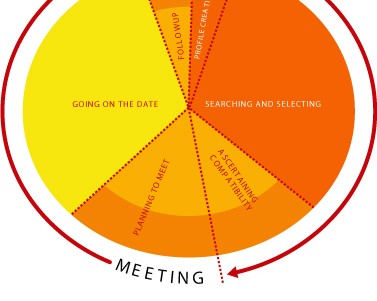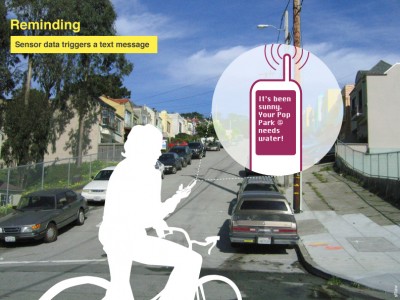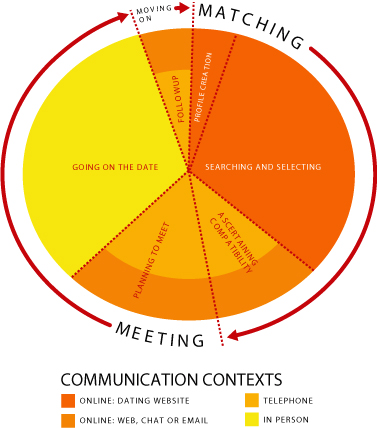About the project
Interviews with online daters on behalf of Yahoo! Personals identified service design opportunities for helping daters move from online interactions to first dates. The result: MapChat, which combines local listings, chat, and maps. MapChat was deployed in beta through Yahoo! Labs in 2008, and resulted in a patent. I led experience research on the project, visualized the results as experience models, and created initial interaction and visual design specifications.
 Interviews with online daters
Interviews with online daters Visualizing research findings: the cycle of matching, meeting, and moving on.
Visualizing research findings: the cycle of matching, meeting, and moving on. Visualizing research findings: intensities of travel and commitment
Visualizing research findings: intensities of travel and commitment Initial design specifications
Initial design specifications
Array






















